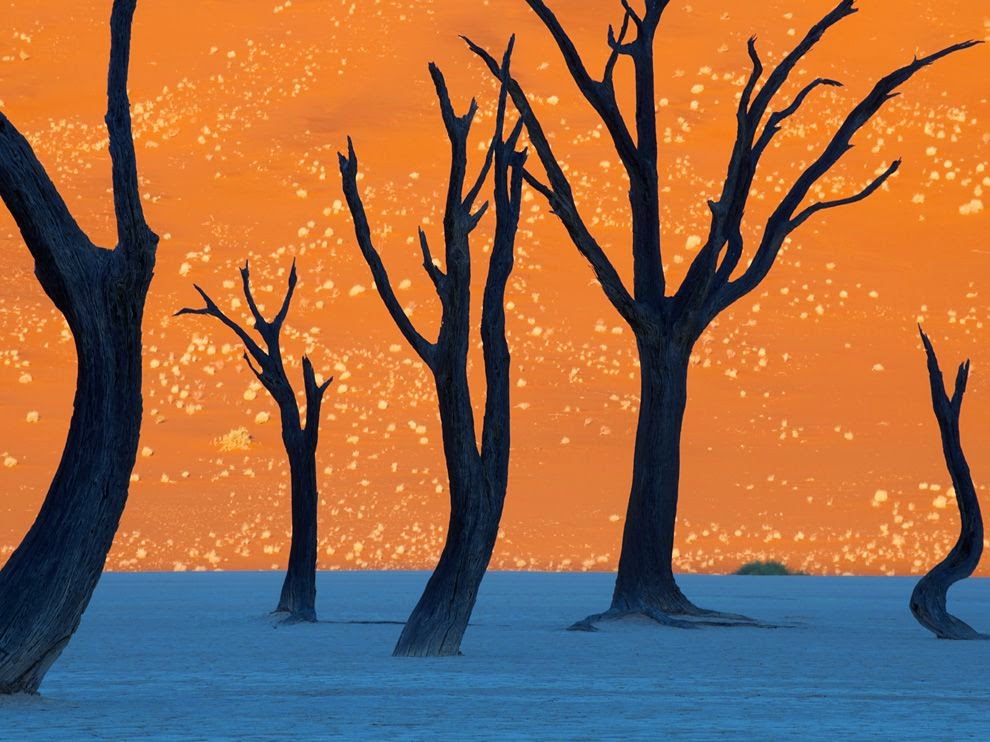This entry was written by one of my grade 10 learners
(Nam-speak for “10th grade student”). I have typed her words below
in normal font, and my commentary is in italics.
By Olivia Dumeni
I want Americans to know the Ovambo’s language and their
work. Americans need to know Oshikwanyama, because Namibians also know English.
And Oshikwanyama is a simple language. They need to know about Namibians’
culture.
(There are more than a
dozen local languages in Namibia. One of these is Oshikwanyama, spoken by the Ovambo
people in northern Namibia. However, Namibia’s official language is English, which
is learned in schools. Olivia wants Americans to learn Oshikwanyama, because
she thinks it’s unfair that everyone must learn English like Americans. While I
wouldn’t require all Americans to learn Oshikwanyama, we should recognize the
message our monolinguism sends to other countries.)
I want Americans to know how to pound mahangu and how to
collect firewood. I want them to know how learners perform in their subjects.
(Mahangu is pearl
millet, the staple of the Ovambo’s diet. They pound millet into flour then cook
it into a stiff porridge. I told the learners that most Americans live in towns
and don’t pound mahangu or cook on fires.)
I want them to know that English is a difficult language for
Namibian people, and to know that Oshikwanyama is a simple language. I want
them to know that Namibian learners have many subjects. We only have 40 minutes
per period.
(In Namibia, the grade
ten learners are required to take 13 subjects a week and are tested on about
eight of those subjects multiple times a year. In my opinion, they have far too
many classes. The kids can’t possibly master that many subjects each term. I
told the learners that many schools in the US use a block schedule— four 1.5
hour classes each day. My learners were VERY jealous of this system.)
Namibians always eat porridge and spinach, sometimes rice
and macaroni. In Namibia many people believe in God. And always on Sunday they
go to church so that God can assist them.
(My learners and I
were discussing religion in America, when I told them that many people in
America are not Christians--that the US has people of many religions, and not
all of them believe in Jesus Christ. Namibia is primarily Christian--Lutheran
in particular. My learners were pretty horrified to learn that not everyone
everywhere is Christian.)
Namibians always cultivate their mahangu, maize, and beans
so that they can get food. In Namibia, learners have black teachers and at our
school there is one white teacher.
(In my village, most
people are subsistence farmers. They mostly eat just the food they grow. This
is not the case for all Namibians though, and there are many large, modern
grocery stores here. Also Namibia is a post-Apartheid country. Race is
frequently the topic of discussion. Namibians are not shy when talking about
race. Wherever I go, I hear the word “oshilumbu”--white person. I also
regularly explain that “No, not all white people like to run, just some.” (I
run a lot.) Or “Yes, there are a lot of black Americans.” To be fair, I think
some Americans would be surprised to learn that there are a lot of white
Africans—not albino people, but people of European descent whose families have
lived in Africa for generations.)
In Namibia, there are many schools, and they are different.
Some schools have electricity, while others they do not have electricity. Some
schools have hostels and others there are no hostels.
(Schools come in a
wide spectrum in Namibia. Some schools in large towns and cities are not that
different from what you’d find in the US or Europe. Inequality, however, is one
of the most common features of Namibian life. Many schools are extremely under
equipped—not enough books, chairs, desks, or classrooms. Luckily, however, most
schools have electricity. My school is scheduled to receive it this year. Also
many schools in Namibia are boarding schools (hostels schools). My school is
not, and some learners walk for over an hour each way to school.)
That is all I want Americans to know!
(There are so many
more things I want Americans to know about Namibia. I return to the US in
September or October, but I will try to publish a few more blog posts about
Namibia before then.)









0 comments:
Post a Comment